Patricia M. O’Donnell, Charlotte, VT (2022)
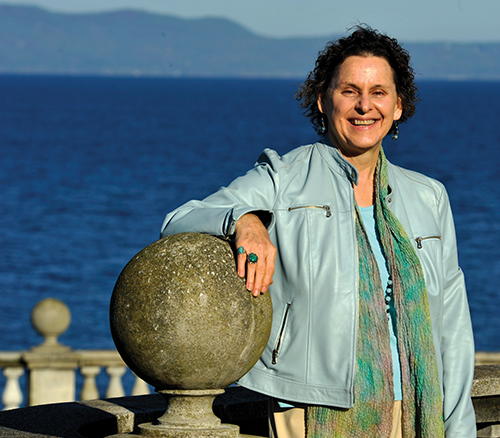
In any given week, the landscape architect and urban planner Patricia O’Donnell might be working with team members on community park research, preparing historically grounded plans for a significant civic landscape, and speaking at an international conference on heritage and climate change. Among the most vocal landscape architects of her generation, for more than four decades O’Donnell has made improving the world’s chances of fighting its deterioration her career goal. Breaching the traditional boundaries that limit what landscape architects generally can accomplish, O’Donnell has engaged challenging global problems through fervent activism.
O’Donnell was born in Buffalo, New York, into what she describes as a competitive family. Her father was a surgeon, her mother a nurse and a gardener. O’Donnell tended her own garden plot as a child and recalls the leafy green landscape of Delaware Park, as well as the devastating effects of Dutch Elm disease. But she remembers her youth as shaped by attending a rigorous Catholic high school, meeting high academic expectations, and rising early to practice ice skating before classes began. After graduating from high school, she sought a less regimented path, enrolling at the State University College of New York at Buffalo to study fine art.
It was the 1960s and social mores called for relishing freedom. O’Donnell married a fellow student at eighteen, gave birth to a daughter, then left an unstable relationship to support her child. Many years later she recalled motherhood, rather than college, as the “formational factor” in her life. Becoming a parent brought out her inherent drive to succeed. She found a job as one of several coordinators of Lexington Co-op in Buffalo, doling out locally grown food. At the time, she lived in the Elmwood neighborhood, known as the “edgy” side of Delaware Park. Having grown up on the other side, she had a native’s understanding of the social dynamics of the park and took pride in this shared space. In 1975 she led a group of volunteers in a two-year project to replant and restore the park’s 1904 rose garden, an addition to Olmsted and Vaux’s 1870 design. During the late seventies, she directed the Buffalo Youth Conservation Corps summer program, teaching participants about the Olmsted and Vaux park and parkway system, native plants, and the importance of public space.
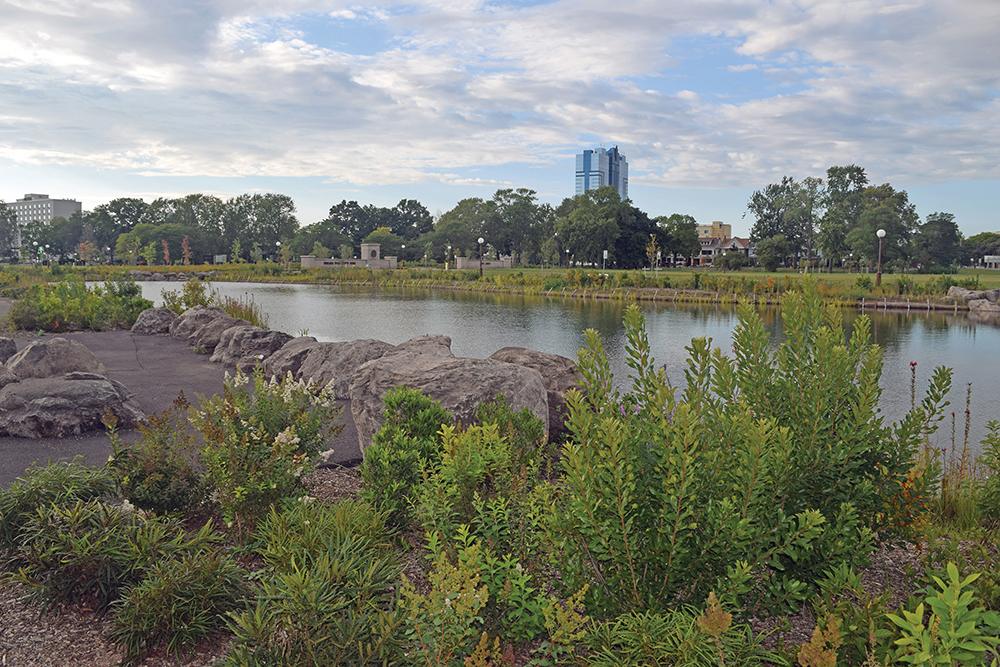
O’Donnell’s interest in public parks led her to the University of Illinois at Urbana-Champaign, where she earned a master’s in landscape architecture with a concentration in applied behavioral research and a master’s in urban planning, emphasizing historic preservation—courses of study she shaped herself. Her skills were put to good use as a research associate for the university’s Housing Research and Development Program, and as a consultant for the Houghton Park User Survey sponsored by the City of Buffalo. Here she learned about the spatial conception of private and public realms, how sequencing space from shared to increasingly more personal, separate areas increased the user’s sense of ownership, and the importance of the perception of safety, managing landscapes to provide open views.
For a summer consultation, O’Donnell took on a survey of Buffalo’s 1,700-acre Olmsted Park and Parkway System. Research led her to the Olmsted Associates office, where she was given free rein to explore the firm’s archives. On one unforgettable day, she discovered sheets of notes, recognized Olmsted Sr.’s hand, and realized she was looking at cut-and-fill calculations for the unbuilt lakeshore boating canals and landforms of South Park. Among the treasure trove, she came upon an exquisite watercolor of the Olmsted and Vaux proposal for that park and identified a Vaux sketch of Front Park, overlooking Lake Erie. That experience left a lasting impression about the importance of primary source research—and the loss of the watercolor (and Olmsted’s death mask) when the artifacts were transferred to the Fairsted archives served as a reminder of the fragility of the historical record.
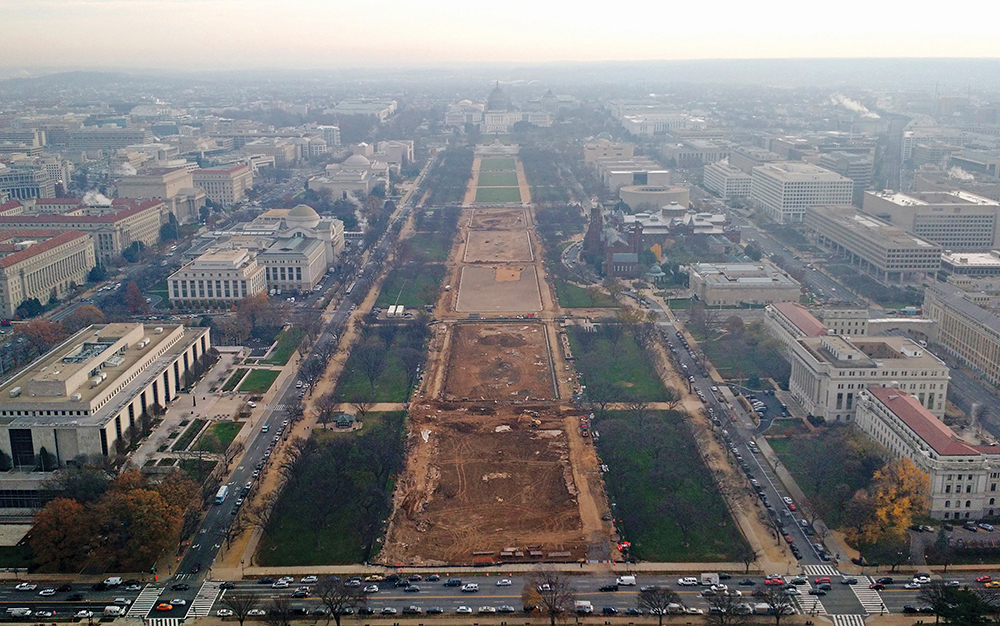
When she was a graduate student, O’Donnell became a founding member of the National Association of Olmsted Parks, dedicating herself to career-long “professional volunteer work.” In the early eighties, when the concept of a cultural landscape was still being defined, she set about shaping the field that became her life’s work, heading the ASLA’s Historic Preservation Committee. She was hired as an associate by Anthony Walmsley, and appointed project manager on the firm’s historic landscape reports for the Ravine, Lake, and Perimeter of Prospect Park. While at Walmsley, she also served as a project manager on the Emerald Necklace Master Plan.
Guiding the Prospect Park and Emerald Necklace projects gave O’Donnell insight into dealing with clients’ multiple voices—from state to local officials, citizen advocacy groups, and the general public—and a sense of the “carefully articulated steps” necessary to manage a comprehensive preservation plan. A 1987 article for Landscape Architecture Magazine, “A Process for Parks,” expressed her sense that collaboration was a critical component in managing these projects. It was her call to action to bring diverse disciplines, audiences, and perspectives to the table when analyzing places of shared value. Such collective voices, she believes, provide the community necessary to restore our inherited public landscapes. Through shared understanding, mutual respect, and collaboration, common heritage agendas can be advanced.
In the mid-eighties there were mounting efforts to further recognize Frederick Law Olmsted and his legacy. An informal public-private group, including O’Donnell, Charles Beveridge, and Jerry Rogers, head of the National Park Service’s Cultural Resources Department, resurrected the concept of HALS, the Historic American Landscape Survey, and launched the field of landscape heritage by developing NPS guidelines, sample National Register nominations, professional standards for fieldwork, and, ultimately, a cultural landscapes program. Although HALS was not officially implemented until 2000, O’Donnell’s office advanced its principles with a growing tribe of historic landscape peers.
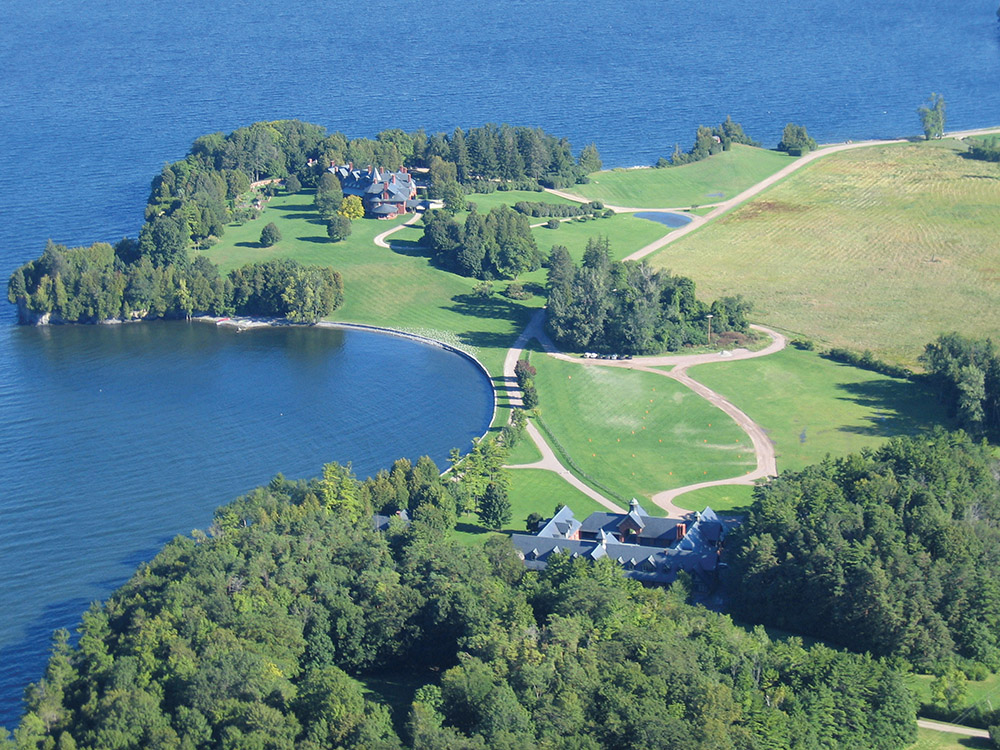
In 1987, with a landscape architecture license newly in hand, O’Donnell founded Heritage Landscapes LLC, Preservation Landscape Architects & Planners, at the time the only firm dedicated solely to the preservation and revitalization of historic landscapes. O’Donnell was already thinking of places holistically, beyond static “historic designed landscapes,” as functional, communal spaces with the potential of bringing people of all economic and social backgrounds together. Her firm developed a comprehensive approach to analyzing historic landscape character, integrity, and significance that would integrate the cultural experiences of a diverse public.
The firm’s first project was a historic landscape master plan report for Andrew Jackson Downing Memorial Park in Newburgh, New York. Working with David Schuyler, O’Donnell gained background in American landscape gardening antecedents, Downing’s role as a national tastemaker, and his partnership with Calvert Vaux, who then went on to join forces with Olmsted on Central and Prospect Parks. This early report laid the foundation for a lifetime of work on more than fifty Olmsted-firm projects.
Heritage Landscapes published the first National Park Service cultural landscape report for the Vanderbilt Mansion National Historic Site. By instituting the use of “Landscape Character Areas,” experimenting with tree dating to reveal historical timelines, and engaging deeply in primary source archival research, the report set a high standard that established Heritage Landscapes as a leader in the field. Only eight years after launching her firm, O’Donnell was elected an ASLA Fellow.
In a desire to contribute on a global level, in 1998, O’Donnell participated in a US/ICOMOS workshop in Ghana, which in contrast to the typical conference and tours, challenged members to work on an actual community project with dedicated, diverse local participants. This experience of effectively collaborating with locals, tribal chiefs, government officers, and public organizations to solve problems and build consensus initiated O’Donnell’s four decades of international work contributing to projects in Cuba, Puerto Rico, India, Bhutan, and the Philippines.
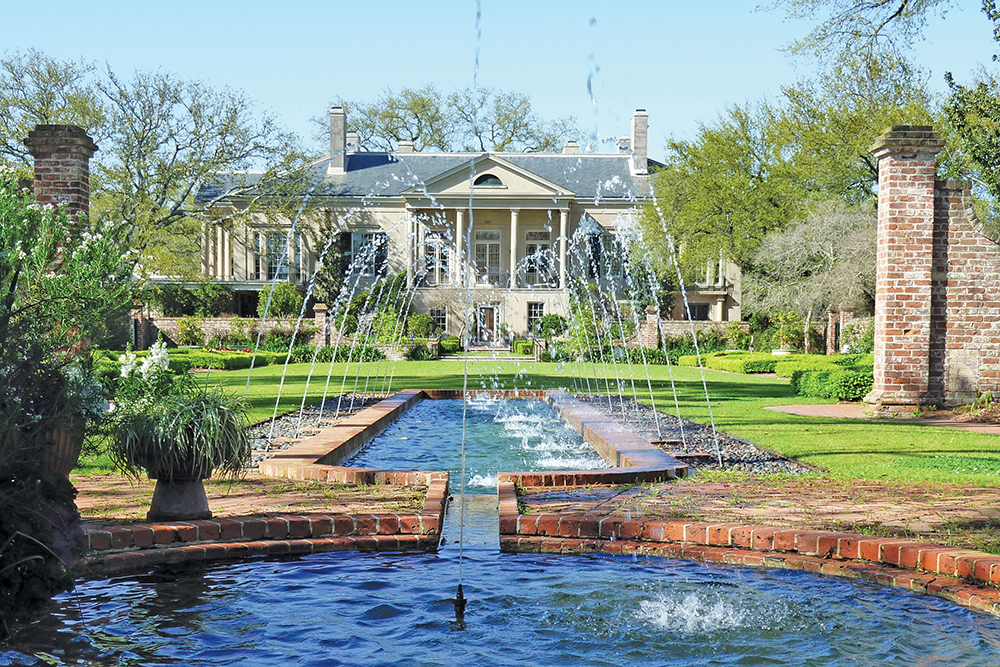
A turning point in O’Donnell’s global work came in 2005, when she was invited by the International Federation of Landscape Architects to serve as a delegate to the UNESCO Culture Sector International Conference “World Heritage and Contemporary Architecture –
Managing the Historic Urban Landscape” in Vienna. The meeting focused on issues of development in historic cities, and at a moment when the floor was open, O’Donnell took the opportunity to insert landscape into the conversation. Noting that landscape comprised more than 50 percent of the urban areas of Washington, DC, and Vienna, she outlined the characteristic features of an urban landscape and the tools necessary to proceed in the dialogue. Her remarks became integral to further discussions, which resulted in the “Vienna Memorandum.” Over the next six years she participated in international gatherings that catalyzed the passage of the UNESCO Recommendation on the Historic Urban Landscape (HUL) in 2011. Francesco Bandarin, then Assistant Director-General of UNESCO for Culture, named O’Donnell one of the “mothers of HUL.”
A review of O’Donnell’s work reads like a list of America’s most revered historic places. Heritage Landscapes has received ninety-eight awards for contributions to a wide range of projects, among them the revitalization of park systems in Pittsburgh, Buffalo, Rochester, and Louisville and team commissions for the US Capitol Grounds and the National Mall, Dumbarton Oaks and Tudor Place in Georgetown, The Alamo, and the Virginia Capitol and Capitol Square in Richmond.
In 2019 the ASLA honored Heritage Landscapes with its Landscape Architecture Firm Award, and in 2021, O’Donnell became the first landscape architect to receive the Louise du Pont Crowninshield Award, the National Trust for Historic Preservation’s highest honor for lifetime achievement. Collaboration remains paramount, however. For O’Donnell, it’s the team effort to “make the landscape heard” that furthers the mission. As founder of Heritage Landscapes, she has trained and mentored a generation of preservation landscape architects to advance the challenging work.
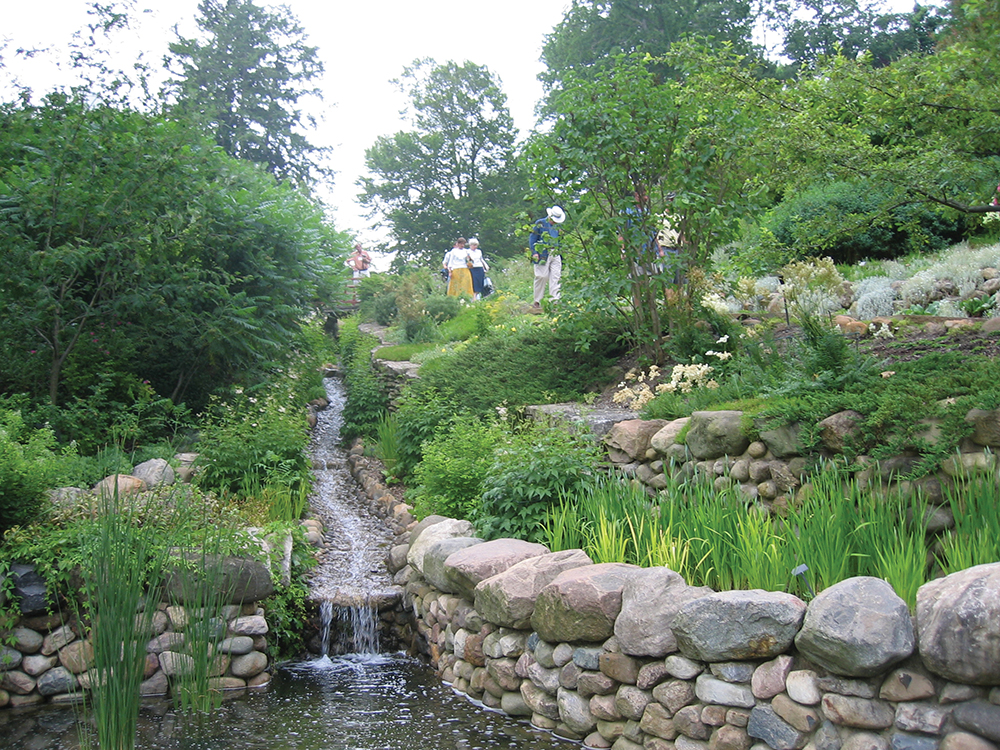
Over the last decade, as climate change and global awareness of the environment have heightened, O’Donnell has increased her efforts to collaborate on international heritage preservation and management. In a presentation at the Summit on Landscape Architecture and the Future held by the Landscape Architecture Foundation in 2016, she spoke to the LAF’s “New Landscape Declaration,” challenging her peers to join together to achieve the United Nation’s 17 Sustainable Development Goals of its 2030 Agenda for Sustainable Development. Efforts toward “culture-based sustainable development,” she explains, must take economic and social, as well as environmental, factors into consideration. Heritage is marginalized when landscape architects narrow their engagement to form and aesthetics. It is essential that practitioners find ways of collaborating across disciplines and with all stakeholders. For those who might still associate historic preservation with living in the past, O’Donnell gives the work new meaning—as an environmental, social, and economic asset contributing to global well-being.
Note: A telephone interview by the author and an oral history interview by Cari Goetcheus, transcribed by Erika Schroeder (Cultural Landscape Leaders Project, NPS, National Center for Preservation Technology and Training, 2015), were principal sources for this article.
—Sarah Allaback is senior manuscript editor at LALH. She is author of Marjorie Sewell Cautley, Landscape Architect for the Motor Age and The First American Women Architects and coeditor of Warren H. Manning, Landscape Architect and Environmental Planner.